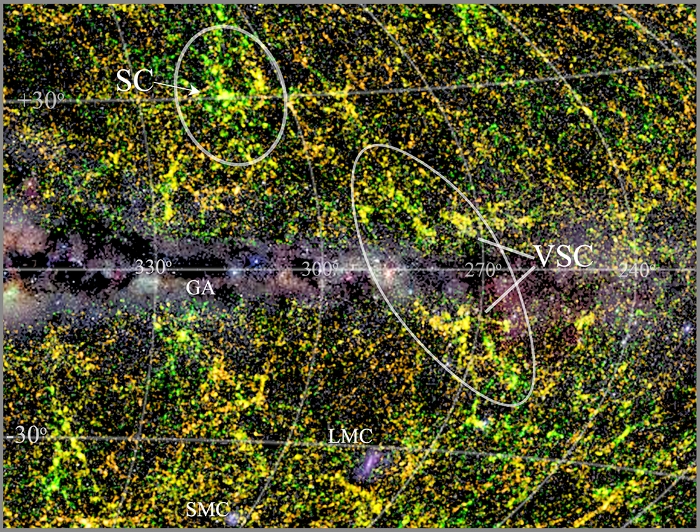
Enormous supercluster of galaxies discovered
An international team of astronomers, including Leiden's Maciej Bilicki, has discovered an enormous supercluster of galaxies. The supercluster had previously been overlooked because it was obscured by our own Milky Way. The researchers are publishing their findings in the Monthly Notices of the Royal Astronomical Society Letters.
Thousands of galaxies
Astronomers from South Africa, the Netherlands, Germany and Australia discovered the supercluster after they had found eight smaller clusters of galaxies in the southern constellation of Vela (Zeilen), using the Southern African Large Telescope. They then directed the Anglo-Australian Telescope in Australia at this same region and discovered thousands more galaxies.
Enormous supercluster
Superclusters of galaxies are the biggest and most massive structures in our universe. The best known supercluster is the Shapley Supercluster at around 650 million light-years away from Earth. This supercluster contains thousands of galaxies, each of which in turn contains billions of stars. The newly discovered Vela Supercluster is 800 million light-years away and the indications are that it is even more massive than Shapley.
Effect on our own Milky Way
Co-author Maciej Bilicki (Leiden Observator) says, 'The Vela Supercluster is quite a long way off, but because it is so enormous and so massive, it can influence the movement of our own Milky Way and our neighbouring galaxies.' Lead researcher Renée Kraan-Korteweg (University of Cape Town, South Africa) has been mapping galaxies that are hidden behind the dust clouds and stellar clouds of our Milky Way for many years. 'When I saw the measurements coming in, I couldn't believe that such an enormous structure could remain hidden until now.'
Planned measurement campaign
The astronomers are intending to carry out further studies on the supercluster. Extensive measurement campaigns are planned over the coming years using different optical telescopes and radiotelescopes that will explore the so-called 'Zone of Avoidance', the region obscured by our own Milky Way.

